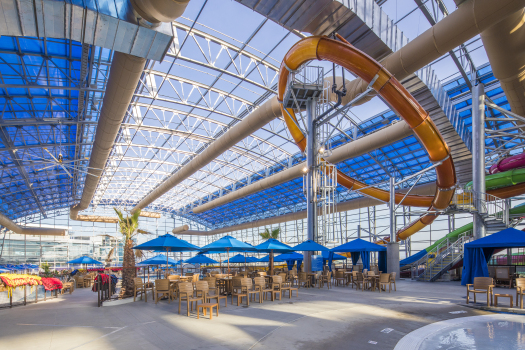In a stress test like no other the hotel industry has experienced before, hotels in small-town markets and along interstates in the U.S. proved to be the most resilient to the demand crisis wrought by the COVID-19 pandemic.
A review of hotel market performance shows that in April 2020, at the worst point in the pandemic for hotel demand, occupancy in small-town and interstate markets was down 24% from 2019 levels, compared to big-city, urban markets where hotel demand was down 54%, according to M. Brian Riley, senior analyst at STR, CoStar’s hospitality analytics firm.
In a data presentation during the Hotel Data Conference, Riley said demand in those market types was also the fastest to recover.
“Rural markets are the only locations where demand, at least on a year-to-date basis, has caught up to 2019 levels — simple demand,” he said.
“It was only a year before those small towns and interstate markets got back to normal.”

Travelers were “looking for big sky country” during the pandemic, “a great place to take the family when you could not take the trip to New York City,” he said.
By comparison, hotel occupancy in urban markets is still down 17% from 2019 levels year to date.
Along with urban markets, resort markets experienced the steepest decline in hotel demand at the onset of the pandemic, but it sprang back quickly starting in the spring of 2021, Riley said.
“The interesting thing to me is that on occupancy, [resort markets] still haven’t gotten back” to 2019 levels, he said. “They’re still a little bit off.”
So far in 2022, however, the data shows demand is cooling off for resorts as well as national park markets.
Riley pointed to Gatlinburg, Tennessee, and Yellowstone National Park’s home of Bozeman, Montana, as markets where hotel occupancy dipped this summer compared to 2021.
For Gatlinburg hotels, “last year was the highest occupancy ever by a really steep margin,” he said, but year over year in June and July, that occupancy percentage is down about 10%.
The same is true for Bozeman — “last year was really, really strong in the summertime; this year, quite a bit weaker,” he said.
Beach resort markets like Myrtle Beach in South Carolina and Daytona Beach in Florida also trended down this summer, with decreasing rates and softer occupancy.
“This year, resorts have been a little bit under pace — 2021, to me, looks like the record year for resorts. I think resorts might be a little softer in 2023.”
Hotel rates are a different story. Rates in resort markets continue to peak compared to 2019 levels, and hotels in small towns and along the interstates are also achieving their highest rates ever, Riley said.
“But when we put a little realism in this,” Riley said, only three market types are beating 2019 rates when accounting for inflation — interstate, small-town and resort markets.
Resort rates reached a peak in April 2022, 31% above 2019 levels.
“What is supporting resorts are their [rate] premiums — that’s really what’s driving [revenue per available room],” Riley said.
Unlike many beach destinations, hotels in resort markets such as Napa Valley in California; Branson, Missouri; and Portland, Maine, are still booking guests at premium rates.
“Definitely I would have not expected Branson [hotels] to hit peaks during a COVID year, but they did. They cater to a slightly older clientele. There have been some declines — 2021 was the peak, certainly in June. … It was not a record year for Branson, Missouri, on occupancy, but it was a record year on rates,” Riley said.
“Portland, Maine, really surprised me. I look at Portland as a high-end market. When you see rates increase year over year by 20-plus percent, that gets my attention for sure.”
The question, he said, is whether these higher rates can be sustained.


